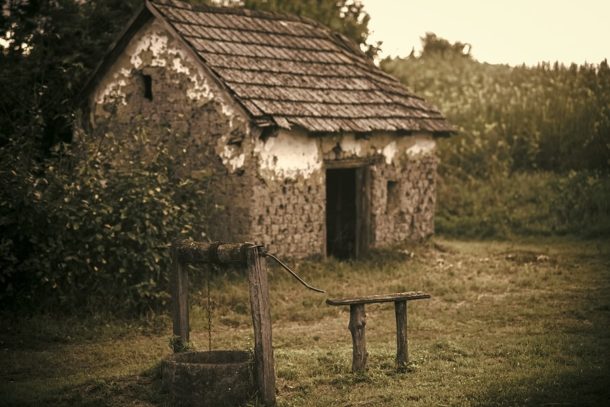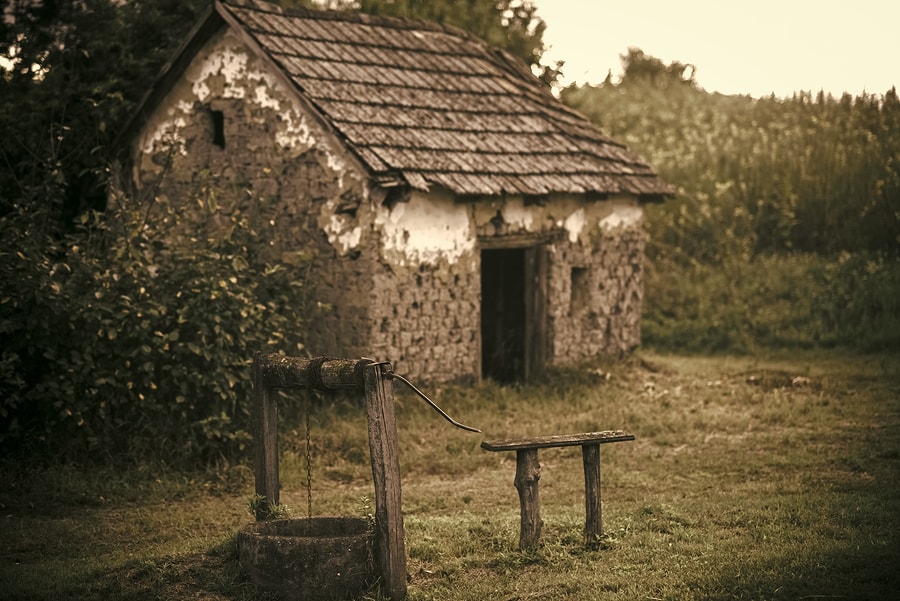
An easement is the right of the owner of a benefit (dominant tenement) over another’s land (servient tenement).
The benefit afforded to the dominant tenement is a right to prevent the servient tenement not to do something, such as, not build a structure on a driveway.
What is interesting about property easements, is that they do not involve ownership to any part of the land, but rather, only a right.
The easement is to exist for the enjoyment of the dominant tenement.
Easements are not straight forward issues and require a full title search and history of the use prior to being able to come to any definitive conclusions.
In this regard, if you have a specific question about an easement affecting your property, we encourage you to book a consultation.
Regrettably, we cannot provide you with free consultations, but we can assure you that you will leave the consultation with a better understanding of your legal rights and obligations and possible remedies to you easement issue.
Why Are You On My Land? Property Easements In Ontario are Forever (Almost)
Property ownership has become more complex as our living lifestyles have evolved.
In the suburbs, you will see large green electrical transformer boxes, or telephone boxes on front lawns.
In urban areas, you will see power-lines running parallel to fence lines in backyards, or shared driveways.
And those on ravine lots, you will see conservation easements restricting the interference with same.
Easements can be granted in several forms; by deed, by prescription (i.e. prolonged, uninterrupted use, etc.), by implication and by statute.
Once obtained, they will continue until such time as they are extinguished, which can be achieved in writing, when the dominant tenement and the servient tenement are owned by the same party, or extinguished by statute.
Express Grant
An express grant means that the right of way has been expressly granted and will be registered on title in the Land Registry Office.
It is generally accomplished by owner of the servient property granting an easement to benefit another property or properties.
Typically when a property owner severs a lot and creates a mutual driveway between the properties.
When the property is split, the express grant will be registered on title.
Like all interests in land, the must be done in writing, verbal grants are not acceptable. Easements should be registered on title of both the dominant land as a “together with” in the thumbnail description and the servient tenements should be registered as “subject to”, so that the easement is properly recorded.
Implied Grant
The implied grant is a legal doctrine which provides that an easement will arise because it is necessary for the use and enjoyment of the property.
Take for example again a property owner who owns a lot and proceeds to sever it, but this time doesn’t register a easement for access and the severed lots is landlocked.
There will be an implied easement for access, as access is necessary for the use and enjoyment of the land
Property Easements of Prescription
A prescriptive easement arises when a right is enjoyed for 20 years without interruption or consent by the servient landowner.
There are specific legal requirements before the court will consider a right to be enjoyed without consent or without interruption.
For example, an easement by prescription cannot arise if the servient property owner provides the dominant user with permission every 20 years.
It should be noted that easements by prescription are limited to those properties which are registered in the Registry system as opposed to the land registered in the Land Titles system, as a prescriptive easement cannot be formed on land registered in Land Titles.
That said, a prescriptive easement which first arose under Registry can continue if the property has been converted to the Land Titles System.
This video explains what property title is and why it is important to have title insurance for homeowners.
Property Easements Concerns
An easement may not be used contrary to its intended to benefit when it was created.
For example, an easement for foot travel does not include vehicle access.
If the servient owner complains about an increase or expanded use of an easement, the courts will resolve the matter by deciding whether the current use was within the original contemplation of the parties when the easement was created.
Thus, it is important to see the precise language of the easement and when drafting them, to ensure that it captures all of the intended uses.
Ancillary Rights
Ancillary rights recognize that an easement may also include specific rights to make the easement meaningful.
For example, an easement to access island properties will include the right to install a dock and a vehicle turn-around area even though the easement doesn’t specifically provide so.
The ancillary right must be necessary for the easement and not just convenient or reasonable.
Extinguishment
Easements are not easily removed.
Non-use by the dominant owner is not sufficient to be considered a release of easement.
There must be some action by the owner of the dominant tenement that demonstrates an intention to abandon or terminate the easement and only the dominant tenement can be the one to release the easement.
An example of an extinguishment of an easement is where an owner of a dominant tenement does not use a right of way for many years, and plants trees and installs a fence to block the easement.
Also, easements may be extinguished if the servient land and easements are expropriated by a third party or in the case where the dominant tenement and servient tenement are owned by the same party.
Remedies
Abatements and Actions are two methods available to provide remedies for disputes over easements.
An abatement (which is not the preferred approach) allows one party to remove the obstruction to the easement.
For example, where the owner of a dominant tenant removes an obstruction from a right of way, or the owner of the servient tenement removing any cause of increased traffic on the easement.
Relief by Action is by far the preferred remedy and can produce damages (monetary benefits) or an injunction to prevent further breaches to the terms of the easement.
The moral here is do not engage in self-help remedies, for if you are wrong, you will put yourself in a worse off position.
Hydro Easements
While you may own the land your home is on, you don’t have the authority to do whatever you would like to it.
A power utility may have buried services that affect where you can install a backyard pool, patio, fence or where you can plant a tree.
Any ‘hydro easement’ that affects your land is something you need to know about before you agree to buy the property.
Your property is subject to a hydro easement under Section 42 of the Power Corporation Act wherein it provides that all cables, poles and wires above and below ground on private property belong to Ontario Hydro.
As such, they have the right to enter your land to maintain those hydro cables, poles and wires.
So, pay attention to their exact location on your land and note where they are on all plans.
Be sure to identify every pole and anchor required for maintenance purposes.
And if you are planning construction on your property, be sure to review these before you proceed.
Property Easements In Ontario; Conclusion
Property easements are historic, nuance riddled real property issues who existence is to protect property rights by ensuring all people have the reasonable enjoyment of their land and can be provided with crucial services, even if it involves other properties.
If you are the owner of an easement right, or the owner of a dominant tenement and want to know your rights or obligations, start with what the registered easement provides for.
From there, or if nothing is registered, you should seek legal advice.
Easements Lawyer In Toronto & Vaughan
If you’re looking for skilled and experienced lawyers in Vaughan or lawyers in Toronto, Hummingbird Lawyers LLP has offices at each location for your convenience. We have a real estate lawyer to discuss property easements matters.
Contact us today.
Related Articles


My neighbour has a sanitary sewer feeding his house across my property.
No easement was established.
The sewer was put in in the 1990’s prior to him or I owning the property’s.
Neither of us were aware of it.
I now want to build on the property but the sewer is in the way.
Who is liable for changing this?
Thanks for your message Mark. Please contact our real estate lawyers directly.
Crews are digging up our front yard/easement. Our landscaping is less than a year old. What responsibility does the company have to repair the areas?
Hi Steve,
Please get in touch with Andrew Fortis, our real estate lawyer to help you further with your question.
We have a parking easement on our land that our neighbour can park on. Does she have to carry insurance on the vehicle? The car is a bit of a project and we fear it will not move again and want to get ahead of the problem before it becomes one.
We also have several large trees around and have had a few fall in recent years. With weird Ontario tree laws I wouldn’t want a fallen tree on my property on top of a derelict car that was not insured.
Kyle, please contact Andrew Fortis, our real estate lawyer.
Last fall I bunch of trees that were on the property line were taken down. The tree people had to go onto the neighbouring property to do that. Is there some kind of permission or easement allowed for such work?
I was told by my property surveyor that there was a 10 foot easement on either side of the property line for upkeep and other property maintenance.
Please advise.
Thank you,
APC
Anna, thanks for your message.
For any easement questions, it would be best to reach out to our real estate lawyer Andrew Fortis or call 905.731.1911.
Can a prescriptive right to a road be obtained by the government (ie a municipality), as opposed to acquiring an easement by expropriation?
Ned, thanks for your message.
It would be best to reach our real estate lawyer by email or call 905.731.1911.